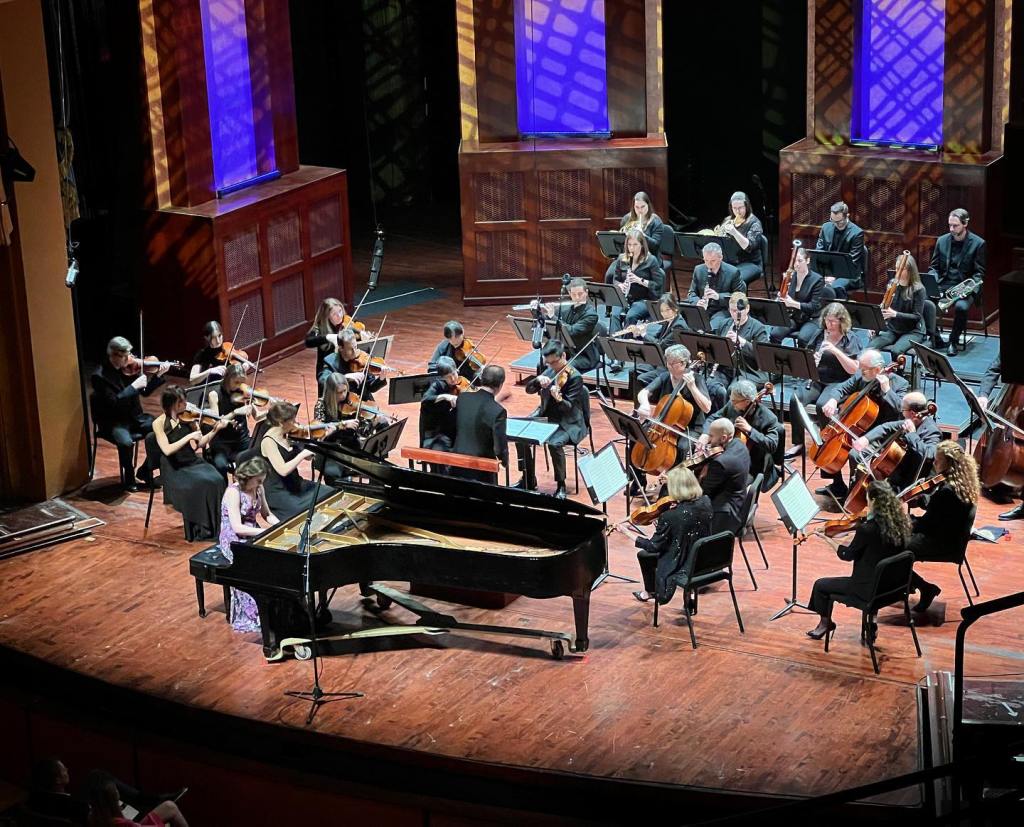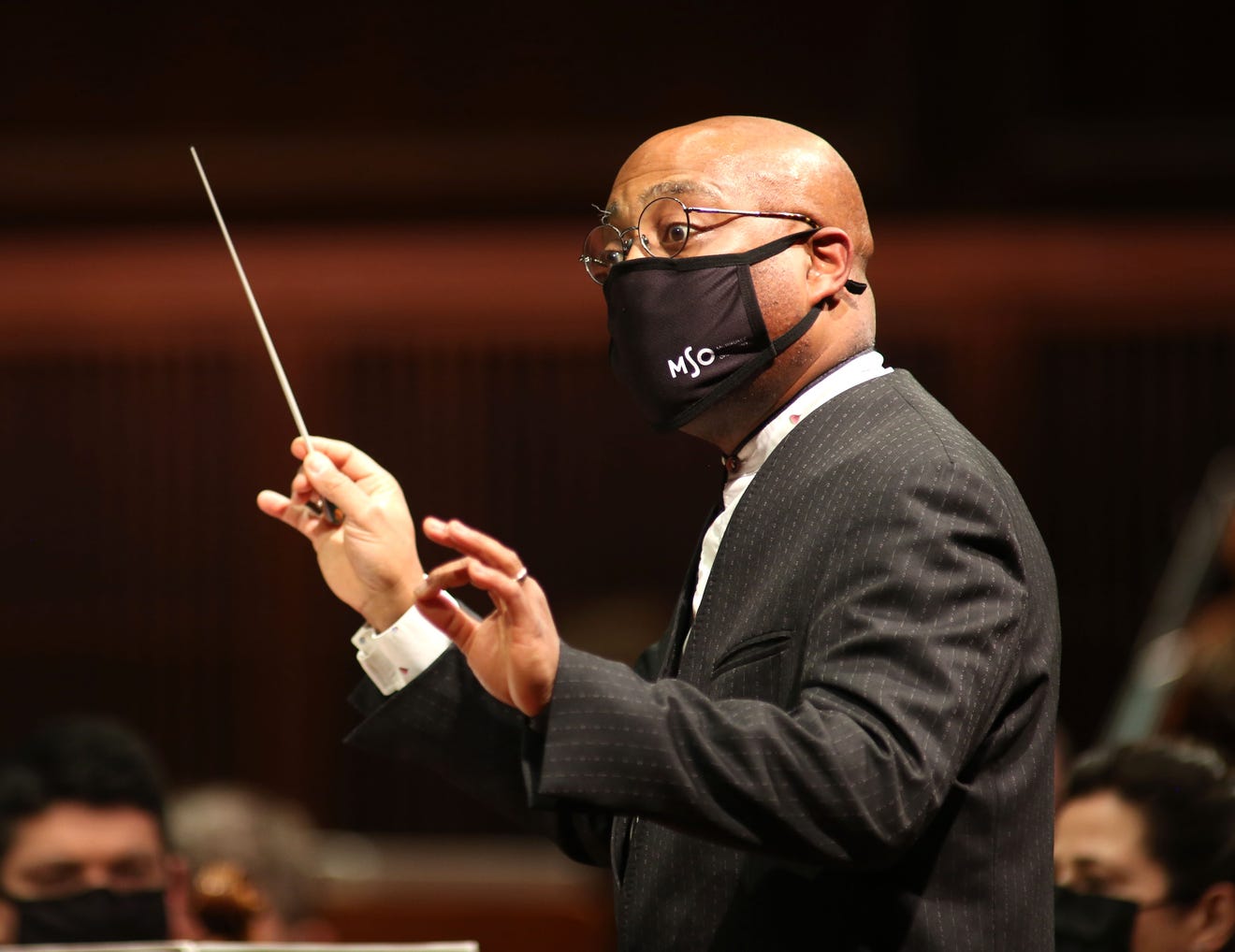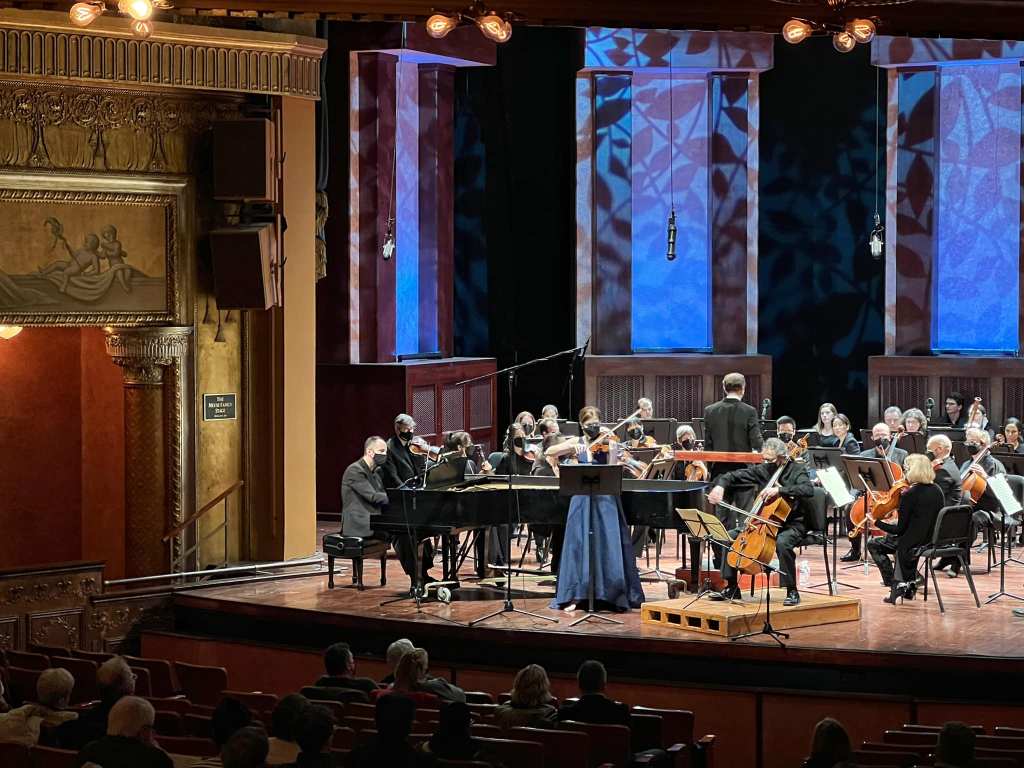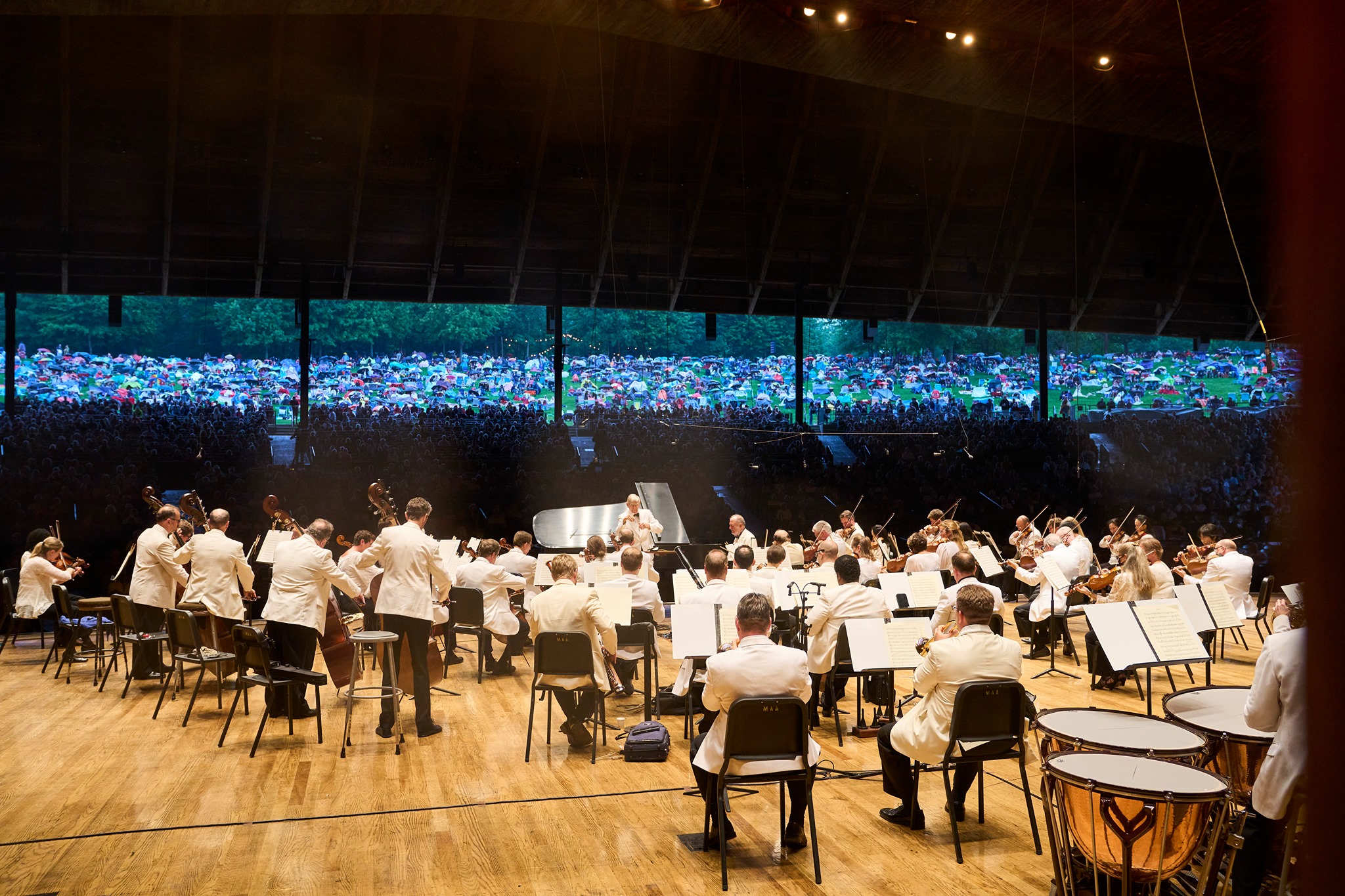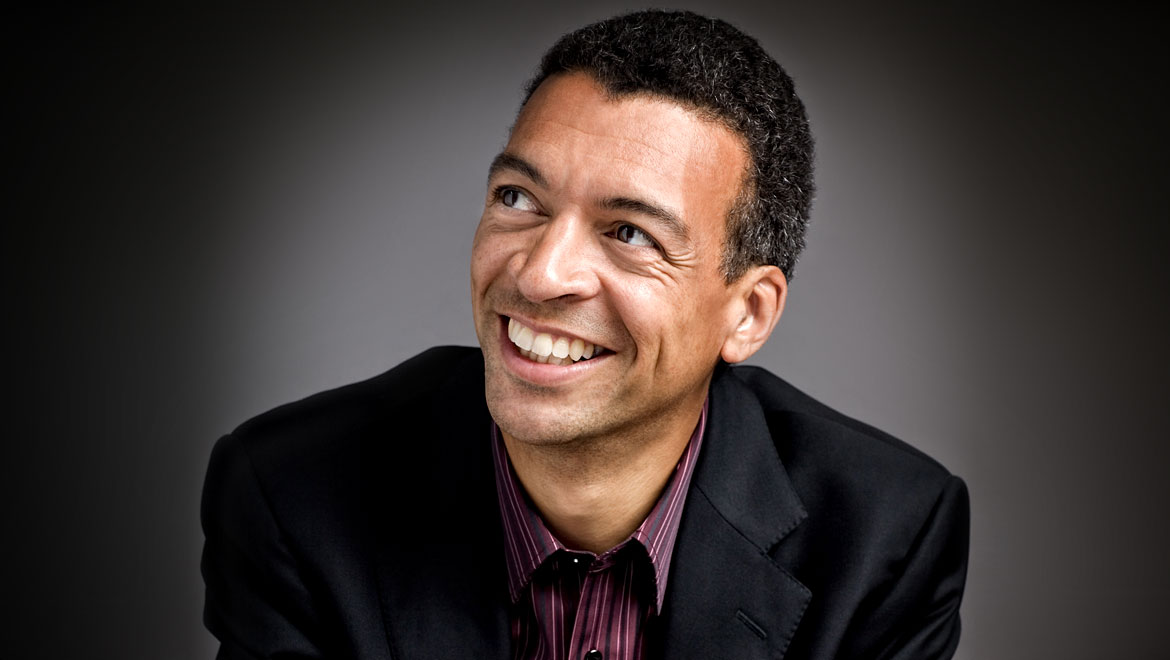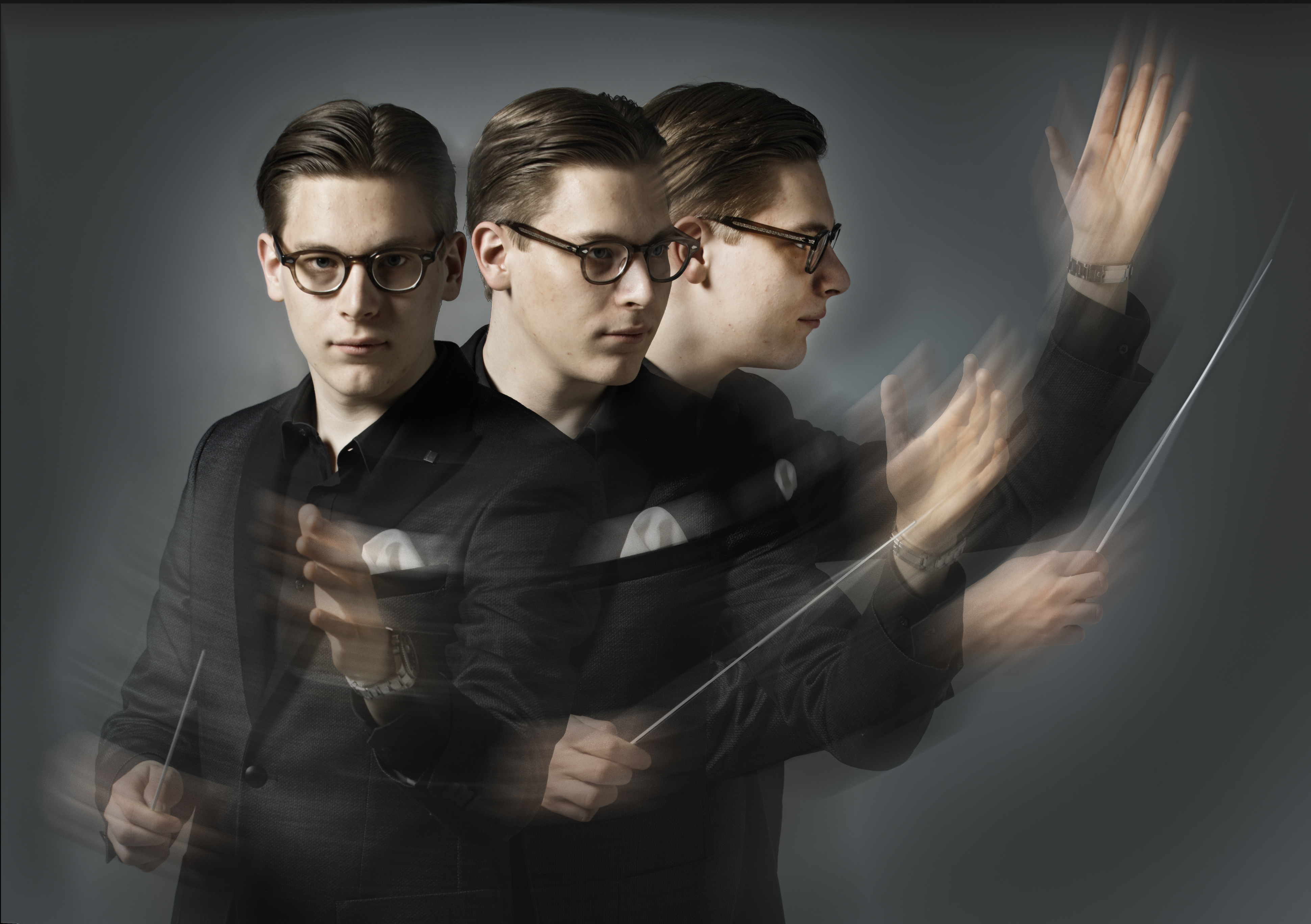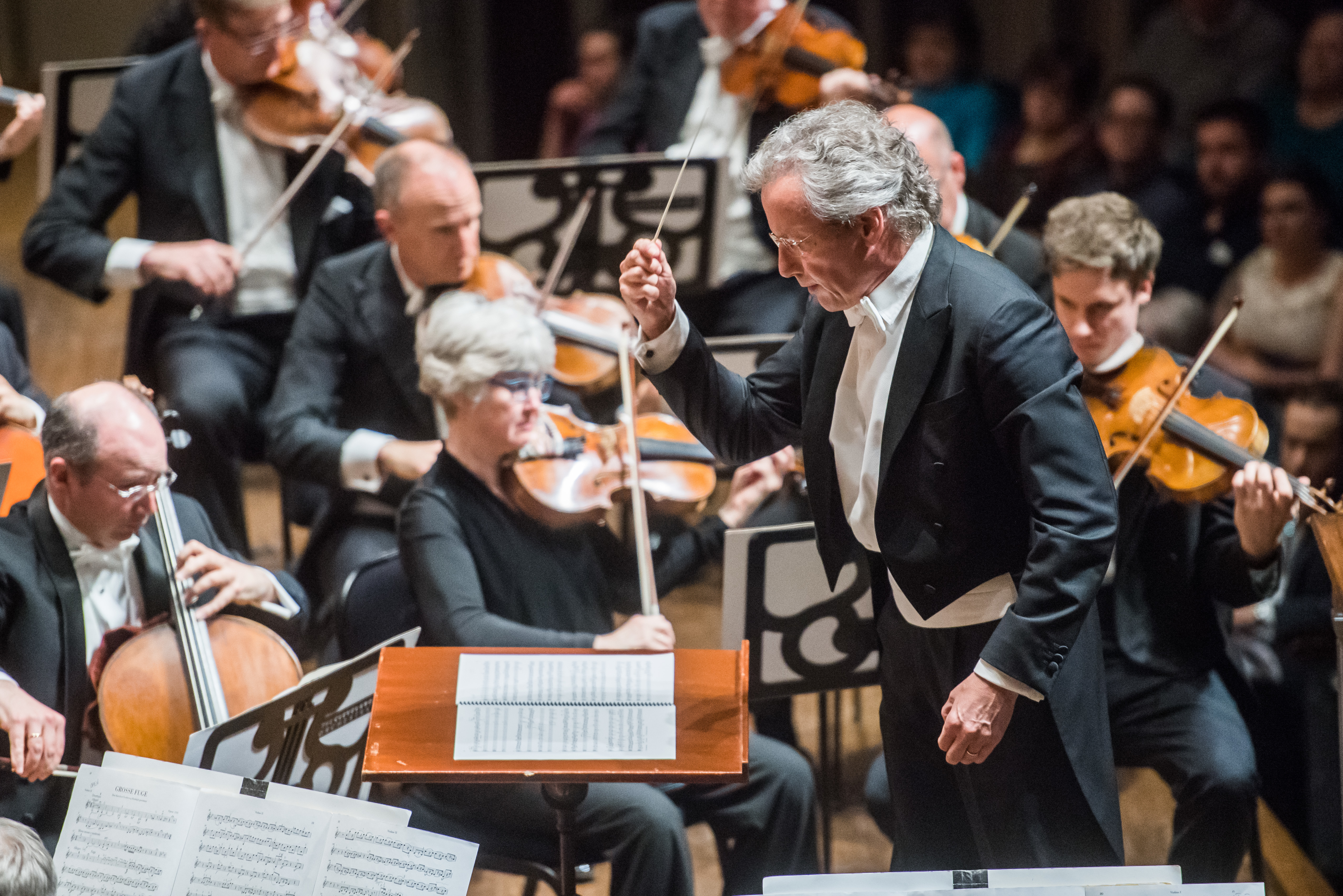Brooklyn Rider
Southern Theatre
Columbus, OH
May 21, 2022
Shaw: Schisma
Esmail: Zeher
Dutilleux: Ainsi la nuit
Beethoven: String Quartet No. 15 in A minor, Op. 132
In the concluding entry of Chamber Music Columbus’ 74th season, Brooklyn Rider presented a program drawing upon their recent commissioning project and subsequent album Healing Modes. Inspired by Beethoven’s Op. 132 quartet which the composer used as a means to express his profound gratitude upon healing from illness, the project engaged contemporary composers to explore the healing properties of music. The five works commissioned were premiered by Brooklyn Rider at various venues during the 2018-19 concert season.

Caroline Shaw’s Schisma (literally translating from Greek to “cleft”) takes as inspiration the Greek islands which have become makeshift refugee camps for Syrians escaping war. The score was colored by harmonies and figures that wouldn’t have been out of place in a work by Philip Glass (a composer this quartet has recorded extensively), and Shaw made creative use of pizzicatos and the percussive potential of the string instruments’ wooden bodies. A brief work, but the textural variety made for a gripping listen. Reena Esmail’s Zeher (the Hindustani word for “poison”) reflects on the composer’s bout with a throat infection (the titular poison). The Hindustani vocal style was mimicked in the cello (Michael Nicolas – one of Esmail’s classmates at Juilliard), with astringent dissonances in the rest of the ensemble. The work ended with resolution and clarity, finally freed of the pathogen.
The first half was to include the remaining works of the Healing Modes project – traversing pieces of Gabriela Lena Frank, Du Yun, and Mantana Roberts, which I’m keen to explore on BR’s recording – but a previously unannounced program change instead offered a preview of the quartet’s next major endeavor, The Four Elements. The project will seek to explore the four classical elements in musical terms, with Dutilleux’s 1976 work Ainsi la nuit (“Thus the night”) representative of air. Cast in seven movements, Ainsi la nuit is one of the landmark works for string quartet from the late 20th century. A kaleidoscope of moods were traversed in this extensive meditation on the night. It’s a work that challenges the listener, but was made all the more approachable by way of Brooklyn Rider’s committed and incisive performance.
Beethoven’s penultimate string quartet was likewise a landmark of its own time, and certainly a work that continues to speak to listeners. Slow introductory material probed for meaning before the first movement took shape with energy and synergy, given with a poignant dramatic sweep. The minuet that followed was rather lighter fare before the great Heiliger Dankgesang. Even for a composer with so many profound and heart-wrenching slow movements to his name, this is certainly a standout, a gracious paean and the emotional core of the work. Far removed from those meditative musings was the jaunty but brief Alla marcia, and lastly, a darkly-hued, impassioned finale, with the quartet’s fiery playing making matters especially arresting.

